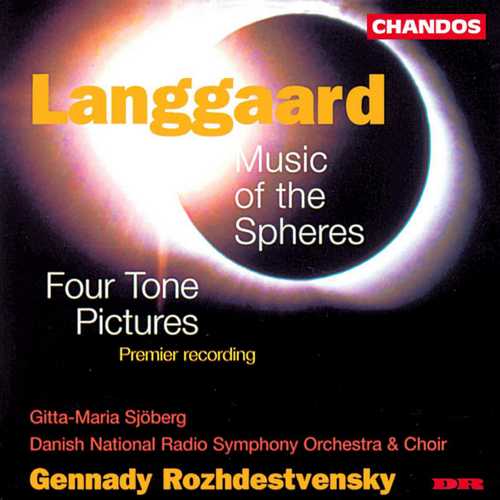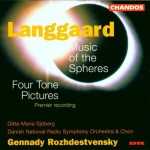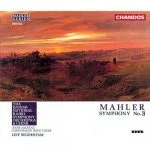
Composer: Rued Immanuel Langgaard
Performer: Gitta-Maria Sjoberg, Danish National Radio Choir
Orchestra: Danish National Radio Symphony Orchestra
Conductor: Gennady Rozhdestvensky
Format: FLAC (tracks)
Label: Chandos
Catalogue: CHAN9517
Release: 1997
Size: 225 MB
Recovery: +3%
Scan: yes
Staerernes musik (Music of the Spheres), BVN 128
01. I. Like sunbeams on a coffin decorated with sweet smelling flowers
02. II. Like the twinkling of stars in the blue sky at sunset
03. III. Like light and the depths
04. IV. Like the refraction of sunbeams in the waves
05. V. Like the twinkling of a pearl of dew in the sun on a beautiful summer’s morning
06. VI. Longing – Despair – Ecstasy
07. VII. Soul of the world – Abyss – All Soul’s day
08. VIII. I wish …!
09. IX. Chaos – Ruin – Far and near
10. X. Flowers wither
11. XI. Glimpse of the sun through tears
12. XII. Bells pealing: Look! He comes
13. XIII. The gospel of flowers – From the far distance
14. XIV. The new day
15. XV. The end: Antichrist – Christ
4 Tone Pictures
16. No. 1. Likewords for a summer’s day saga
17. No. 2. A scent of mull and mud
18. No. 3. A golden flake hovers above
19. No. 4. The flowering summer was linked to the harvest
Music of the Spheres (1916-18) is probably Langgaard’s most important – certainly most original – work. So radical did its sonic experiments seem even in the late 1960s that Ligeti no less, when inspecting the score, quipped that he had merely been a ‘Langgaard imitator’ all along. The manipulation of blocks of sound rather than conventional thematic development does have much in common with trends in post-Second World War avant-garde composition (though stemming from impressionism), but other contemporaries of Langgaard’s, such as Schoenberg and Scriabin, had traversed similar terrain at least in part. The main difference between Langgaard and Ligeti lies in the former’s reliance on a fundamentally tonal language, however eccentrically deployed, and Music of the Spheres seems in hindsight to be a bridge between two other highly virtuosic scores with celestial connotations: Holst’s The Planets and Ligeti’s Atmosphères. The Tone Pictures (1917) were written alongside this extraordinary work, yet possess none of its stature: four charming songs, they seem effusive and outmoded by comparison. Chandos’s sound is superb.



